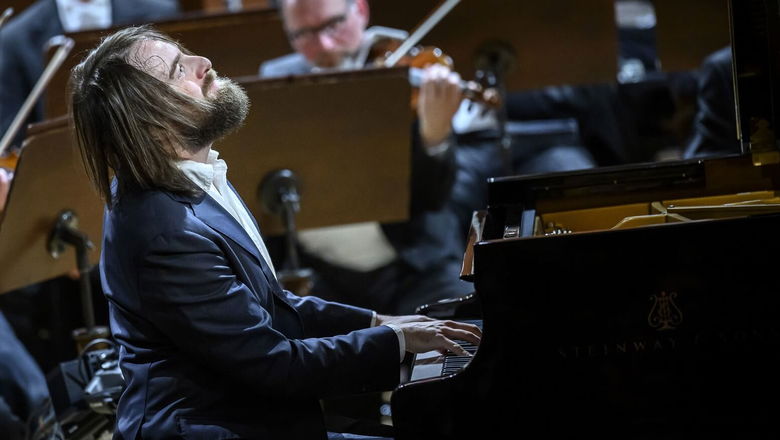Pyotr Ilyich Tchaikovsky won the hearts of musicians with his Piano Concerto in B minor, Op. 23, but his works for piano cover a great diversity of genres and include piano sonatas, a form that was still very popular in the 19th century. Mastery of the piano sonata genre was one of the fundamentals of every school of composition. Tchaikovsky wrote his first Piano Sonata in C sharp minor in 1865, his last year of study at the St Petersburg Conservatoire, and in it he amassed with everything expected in the sonata genre—a first movement in sonata form, a slow and lyrical second movement, a dance as the third movement connected “subito” to the fourth movement, a robust-sounding, technically difficult finale, again conceived in a sonata-form layout. During the composer’s lifetime, this sonata was regarded as his most important student work. The composer himself reused material from the third movement (Scherzo) for the third movement of his Symphony No. 1, Op. 13 (1866). The composer left us no information about the sonata, and the manuscript was found after his death amongst his papers in Klin (a town northwest of Moscow); it was then designated as his Op. 80.
The work was given its first public performance by the Ukrainian-American pianist and composer Alexander Siloti (1863–1945), who played the first and third movements at two concerts in Odessa and Moscow in September and October 1900. That same year, the sonata was issued in print by the Moscow publisher Pyotr Jurgenson in an edition prepared by the composer Sergei Taneyev (1856–1915), Tchaikovsky’s former pupil at the Moscow Conservatoire. Taneyev had to make some minor changes, especially to the end of the second movement (Andante). However, the work’s first performer had strong opinions of his own about the sonata, so Jurgenson published yet another edition the very next year, this time containing Siloti’s versions of the first and third movements. Each subsequent performance or edition of the sonata is proof that the sonata has been unjustly neglected.
Tchaikovsky’s ballet The Sleeping Beauty, Op. 66, was premiered in January 1890 at the Mariinsky Theatre in Saint Petersburg. Based on a fairytale by Charles Perrault, the ballet is divided into a prologue, three acts, and a concluding apotheosis. Tchaikovsky’s remarkably melodious ballet music has also found its way into the piano literature thanks to an arrangement by the pianist, conductor, and composer Mikhail Vasilievich Pletnev (*1957), winner of the gold medal at the 1978 Tchaikovsky International Piano Competition; his transcriptions of Tchaikovsky’s ballets The Nutcracker and The Sleeping Beauty date from the same period. Pletnev dedicated the concert suite for solo piano based on selections from Tchaikovsky’s Sleeping Beauty to Lev Nikolayevich Vlasenko, who was his piano teacher at the time at the Moscow Conservatoire. The suite follows the ballet’s sequence of events very loosely, singling out numbers with distinctive fairytale characters interspersed with slower contrasting passages. The arrangement poses extraordinary technical and interpretive challenges comparable to those found in the most difficult works of Franz Liszt, giving performers the chance to exploit contrasting colours and the entire sonic capabilities of the piano to an unusual extent.


